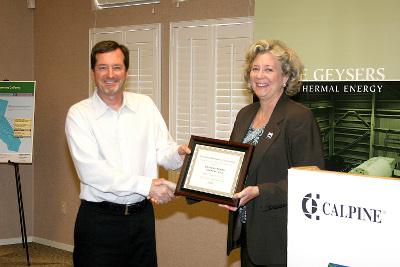LAKEPORT – Passengers in a powerboat that hit a sailboat in April of 2006 and a sheriff's deputy who stated that breathalyzers being used for drunk driving arrests weren't properly calibrated were among the seven witnesses who testified in day three of Bismarck Dinius' trial on Thursday.
Dinius, 41, of Carmichael is on trial for felony boating under the influence causing great bodily injury.
He was at the tiller of a sailboat belonging to Willows resident Mark Weber on April 29, 2006, when it was hit by off-duty sheriff's deputy, Russell Perdock. A sailboat passenger, Lynn Thornton, 51, died three days after the crash of her injuries.
The prosecution alleges that Dinius had a 0.12 blood alcohol level at the time of the crash and that he was piloting the boat, the Beats Workin' II, without its navigation lights on.
The defense is arguing that Dinius was not in charge of piloting the boat and that Perdock – who witnesses on Thursday estimated was traveling between 35 and 40 miles per hour on that dark April night – was responsible and should have been charged.
District Attorney Jon Hopkins called witnesses on Thursday including teenagers Jennifer Patterson and Gina Seago, who were at the Holdener home on Soda Bay Road next to the lake the day of the crash.
Patterson said she was sitting cross-legged on a trampoline looking out at the lake, while Seago said she was sitting down on the dock talking with another friend at the time of the crash.
Seago said the night was “pitch black,” with no moon.
Both said they saw no other lighted boats that evening but Perdock's, the navigation lights of which they watched traveling south across Konocti Bay shortly after 9 p.m. They could also hear the boat.
“It was really loud, like, unusually loud, and it was going pretty fast,” said Seago. She also stated during her testimony that the boat “looked like it was going faster than it should probably.”
Seago said she saw the sailboat's sails light up when the speedboat's navigations lights hit it, about two seconds before the collision.
Then the crash occurred.
“At impact it was pretty loud,” said Patterson. It was silent for a second, then she said she heard people laughing, “and then it turned into screaming very quickly.”
Patterson said she could see sparks when the power boat struck the sailboat's mast as it flew over it following the initial collision.
Seago also saw sparks and heard two really loud snaps during the crash. She said it looked liked the powerboat was suspended in the air as it went up the sailboat's mast before coming down on the other side.
Members of the Holdener family got in a wakeboard boat and went out to offer help to the two boats in the crash.
Walkers give perspective from powerboat
James Walker and his daughter, Jordin, 18, also were on the stand Thursday.
The Walkers were riding with Perdock in his powerboat when it hit the Beats Workin' II.
James Walker, a high school friend of Perdock's, was visiting from out of county and staying in another friend's cabin at Lily Cove outside of the city of Clearlake and across the lake from Konocti Bay.
That night between 8:30 p.m. and 8:45 p.m. Perdock came by and asked them if they wanted to go for a ride.
The Walkers, who had been getting ready to turn in for the night – Jordin Walker was in her pajamas – agreed and got in the boat for what they estimated was between a five- and 10-minute ride to Konocti Harbor Resort & Spa. There, Perdock drove by the dock to show Walker another friend's boat before heading for Richmond Park Bar & Grill in Konocti Bay to get gas.
“It was one of those beautiful Clear Lake nights,” James Walker said, noting the temperature was about 80 degrees.
He said Perdock had just put his boat into the water for the summer and wanted to make sure it was in proper working order, so both men were paying attention to its instrumentation panel.
As they were coming around Fraser Point – which, along with Wheeler Point farther to the south, denotes the boundaries of Konocti Bay – Walker said he noted that Perdock's speedometer was moving between 35 and 40 miles per hour. “It was staying right in that range.”
In their turns on the stand, Jordin and James Walker both said they saw no other boats with lights on the water that night, and it wasn't until immediately before the collision – when Perdock's navigation lights fell on the sailboat – that they saw it.
Jordin Walker said she saw “just a pole and a white sail” about two seconds before impact. Her father said he saw a “white blur.”
Jordin Walker, who was sitting in the passenger seat on the lefthand side, was thrown forward in the boat and suffered an injured back and leg. James Walker, who was standing between his daughter and Perdock, said he was afraid the speedboat was going to flip over. Perdock suffered cuts to his head, he added.
During testimony, Jordin Walker dabbed her eyes with a tissue as she recounted the crash, and described hearing people screaming in the sailboat.
After the crash, “I was in shock,” she said, adding that she doesn't remember the powerboat going over the sailboat or some of the other details involved with the incident.
James Walker didn't know if the powerboat was taking on water, and feared his daughter might drown, so he pulled her out of where she was pinned between a seat and the front of the boat.
“It took a long time to get her out of there because I thought she had a broken back,” he said.
Afterward, he held her as they were towed to shore by fishermen Anthony Esposti and Colin Johnson.
At the shore paramedics placed Jordin Walker on a stretcher and transported her, her father and Dinius by ambulance to Sutter Lakeside Hospital.
Deputy recounts scene; says breathalyzers not calibrated
Sheriff's Deputy Mike Morshed, who was the sergeant in charge of detectives in April of 2006, took the stand Thursday afternoon.
He was one of the first sheriff's personnel to respond to 9130 Soda Bay Road, where the boats were being towed. There, he and Sgt. Mark Hoffman tried to help control and organize the situation.
“The scene was chaos,” Morshed said.
He saw the powerboat being towed in, with Perdock standing on the bow with blood coming from his forehead. Before that, Morshed said he didn't know Perdock was involved.
When Perdock was on shore, Morshed spoke with him, and said he smelled no alcohol and saw no signs indicating Perdock was intoxicated.
A short time later Sgt. Dennis Ostini of the sheriff's Boat Patrol arrived and took over charge of the scene, Morshed said.
Morshed said he witnessed then-Sgt. James Beland offer to conduct a preliminary alcohol screening (PAS) test on Perdock.
“I remember Sgt. Ostini, Sgt. Beland and myself having a three-way discussing about using the PAS,” said Morshed.
He said they concluded that they didn't detect any odor of alcohol on Perdock, who had agreed to go to the hospital for a blood draw. Morshed added that the PAS had not been calibrated for a long period of time so there was no point in using it.
“It's kind of a useless tool to us,” he said.
He later assisted Deputy Lloyd Wells tow the sailboat to the sheriff's Boat Patrol barn at Braito's Marina on Buckingham Point.
During cross-examination, defense attorney Victor Haltom asked Morshed what he thought was a safe speed on the lake at night. Hopkins objected, saying Morshed's opinion was irrelevant. Judge J. Michael Byrne sustained the objection.
At one point on the shoreline, Morshed said there was yelling back and forth between the sailboat and powerboat occupants. He said the people from the sailboat were yelling at Perdock, who yelled back that they didn't have their lights on.
“We were trying to keep the two sides separate,” he said.
Morshed said Sheriff Rod Mitchell arrived later that night, and he saw Mitchell speaking with Ostini and Perdock.
Haltom asked Morshed more questions about the PAS tests.
Morshed explained that, at the time of the crash, the program for the PAS units was “not being calibrated like it should have been calibrated,” which meant the readings probably weren't accurate.
Were the tests still being used to arrest people for driving under the influence, Haltom asked? Morshed said they were.
“Even though they were inaccurate?” Haltom asked.
“Yes,” Morshed replied.
In April of 2006, Det. Jerry Pfann, who testified about handling the blood evidence on Wednesday, was one of Morshed's subordinates.
Under Haltom's cross-examination, Morshed explained that he had evidence lockers added at some point to the Lower Lake Substation and the sheriff's main office so deputies could secure evidence without having to drive it immediately to the main evidence facility in Lakeport. He said he couldn't remember if that had been done by the time of the crash.
The individuals with access to the main evidence facility, Morshed said, were Pfann, Perdock and Ilona Parker, Pfann's assistance. Morshed said he didn't have a key.
During his testimony on Wednesday, Beland said Ostini said no to the PAS test, and that he understood Ostini's direction not to administer the test as an order, which would have resulted in him being written up if he had pressed it.
But when Haltom questioned Morshed about the PAS test on Thursday, Morshed stated, “In my opinion there was no order given either way.”
That conflicts with a statement Morshed gave to District Attorney Investigator John Flynn this past April 29, in which he said he ordered Beland not to give the test. In that statement Morshed said the PAS units hadn't been calibrated in more than a year.
During his testimony Thursday, Morshed said he didn't get on either boat before helping tow the sailboat to the boat barn. “The sailboat was just destroyed. You almost couldn't tell what it was.”
During an afternoon break, the judge spoke with Hopkins and Haltom out of the jury's hearing, at which time Hopkins said that he heard from one of his staff that Dinius had arrived at court that morning accompanied by women holding signs about the case, which jurors had to walk by to get to the courtroom.
“I'm getting concerned that we're going to have jurors who are influenced,” he said.
Hopkins said he also had heard an outburst from people in the audience who were wearing t-shirts with Thornton's picture when Morshed was testifying.
“I think we need to maintain decorum in the courtroom,” he said, arguing that such behavior can backfire and affect the jury.
Haltom said Dinius wasn't involved with signs or t-shirts, and he referred to a US Supreme Court case that allowed people to wear buttons to court.
Carol Stambuk, Thornton's friend, stood up and showed off the black t-shirt she wore, which had pictures of Thornton and her brothers.
“Those are a little more than buttons,” said Hopkins.
Byrne said it's part of peoples' right to expression. But he warned that if it appears orchestrated, it can backfire.
“This case has plenty of serious issues in it,” Byrne said.
Hopkins also was concerned that the jury and spectators might be mingling at times in the courthouse building.
“This is a good argument for the state budget to pay for a new courthouse in Lake County, that's for sure,” said Byrne.
Morshed reports on speed
After that exchange Morshed returned to the stand, where Haltom continued cross-examination.
Morshed said he discussed the crash with Perdock.
“Did he tell you how fast he was going?” asked Haltom.
“He told me he was going 40 miles per hour,” Morshed said.
Morshed asked Perdock how he knew his speed. He said Perdock responded that he knew his boat well, and that the tachometer was straight up and down, which means 40 miles per hour.
Recalling other statements Perdock made, Morshed said, “He kept saying the lights on the sailboat were off.”
Under continued questions from Hopkins, Morshed explained that PAS tests are used as part of field sobriety tests when making a determination in a driving under the influence case.
Hopkins asked if the PAS is used to confirm that alcohol is present. Morshed said it can be, although a deputy doing a DUI investigation already is assuming there is alcohol due to odor.
“When the PAS devices were not calibrated, was it your understanding that the result they showed would not be introduced in court?” Hopkins asked.
Morshed said if they were introduced in court, they would have to disclose, when questioned, that the device was off due to it not being calibrated.
Hopkins asked if the sheriff's office maintained a policy to take suspected DUI drivers to get blood, urine or breath tests at a location other than the scene. Morshed said yes.
In a final round of cross examination, Haltom asked if all PAS tests in the county weren't calibrated. Morshed said it was just those used by the sheriff's office.
Dispatcher reports on emergency calls
Kimberly Erickson, a communications operator with the county's Central Dispatch, was on duty on the night of the crash along with Deputy Martina Santor.
Erickson remembered receiving the first call about the boat crash, which was from Perdock, who used his cell phone to dial into the Central Dispatch number. Cell phones dialing 911 usually are routed through California Highway Patrol Dispatch in Ukiah before being transferred to the appropriate agency.
Erickson said she thought she called out REACH air ambulance along with different fire departments, and tried to find an agency with a boat that was available. Santor notified Ostini.
She said they received many calls about the crash – between 20 and 30 – as she attempted to dispatch emergency response, a situation which was “extremely chaotic.”
The airwaves were so flooded that Santor issued a Code 33, telling other law enforcement officers not to use the radio and to keep the airwaves clear for dispatch.
Erickson said Perdock called in several times with information about the situation and the location.
Haltom asked Erickson if she treated others trying to report the crash differently because she had already spoken to Perdock.
“If they weren't able to provide anything new we let them know we were aware of the situation,” she said, adding that she was interested in getting information from anyone who could give it.
The first incident report which Erickson generated showed a time of 9:10 p.m. Medics from Kelseyville Fire were on scene by 9:25 p.m. The initial reports noted that there were three people in the water, information which Erickson said she believed Perdock gave her.
Boat Patrol deputy testifies about scene
Boat Patrol Deputy Lloyd Wells got a call around 9:30 p.m., about 20 minutes after the crash. When he arrived at the scene, Ostini told him to tow the sailboat back to the boat barn at Braito's.
He said Morshed gave him a ride back to get the sheriff's boat, and the two of them then came back for the Beats Workin' II.
Wells estimated it took him 45 minutes to tow the badly damaged sailboat, which he placed in a boat slip in front of the boat barn.
The next day he went to Doug Jones' business to retrieve the sailboat's trailer so he could tow it out of the water and place it in the boat barn.
He said he and Jones discussed the trailer being in disrepair, with broken lights. Wells said the ball on the trailer hitch he had wasn't the right size, so he had to borrow one before being able to tow it.
Jones, who testified on Tuesday, had stated that he saw lights on the sailboat, and that he had attempted to tell Wells, who he said replied that he couldn't have seen lights.
But on Thursday Wells denied that such an exchange took place, adding that he knew very little about the case at that point.
Wells said he didn't participate in the investigation on the night of the crash, that his time was taken up in towing the boat.
“Were you aware of any issue to do with lights on the sailboat?” Hopkins asked.
“No,” said Wells, adding that he didn't know there were allegations that he sailboat's lights weren't on. “I was in and out of there pretty quick” before he left to tow the boat.
On May 3, 2006, Wells photographed the sailboat's bow, stern and mast lights before removing and packaging them. They were then placed in an evidence locker in downtown Lakeport. The bow and mast lights appear fine, and the stern light, which was bent over, remained intact as well.
He also determined that the boat had cabin lights, one of which he found lying on the cabin floor.
Wells recounted on the stand that while he and Morshed were towing the sailboat back to the boat barn they discussed what was going on with the situation on shore but didn't get into the case's specifics.
A high ranking sheriff's deputy was involved in a crash and it wasn't a topic of discussion? Haltom asked. Wells said it might have been for Morshed, but it wasn't for him.
He said he was too busy dealing with the sailboat. He'd never towed one before and didn't know to tie the rudder down straight. “I was chasin' that thing the whole way over there,” he said, explaining that the sailboat's rudder caused it move around behind the 22-foot aluminum sheriff's boat.
Once the sailboat was at Braito's, it was left unsecured for as long as seven hours, with Wells estimating that he left around 2 a.m. or 3 a.m. before returning at 9 a.m. By that time, Ostini already was there.
Testimony continues on Friday.
Witnesses so far, in order
Day one (following opening statements): James Ziebell, sailor, helped skipper Beats Workin' II in Konocti Cup; Doug Jones, past commodore of local sailing club; Anthony Esposti*, fisherman; Colin Johnson*, fisherman.
Day two: Lake County Sheriff's Det. Jerry Pfann, Andrea Estep*, phlebotomist, St. Helena Hospital-Clearlake (formerly Redbud Community Hospital); former sheriff's Sgt. James Beland; LaDonna Hartman, phlebotomist, Sutter Lakeside Hospital; retired sheriff's Sgt. Mark Hoffman; California Department of Justice criminalist Gregory Priebe, Santa Rosa lab; California Department of Justice criminalist Gary Davis, Sacramento toxicology lab.
Day three: Jennifer Patterson, witnessed crash from Holdener property on lakeshore; Gina Seago, witnessed crash from Holdener property on lakeshore; Jordin Walker, passenger on Russell Perdock's powerboat; James Walker*, high school friend of Perdock's and passenger on his powerboat; sheriff's Deputy Mike Morshed*; sheriff's communications operator Kimberly Erickson; sheriff's Boat Patrol Deputy Lloyd Wells*.
* = Indicates a witness subject to recall at the request of the defense.
E-mail Elizabeth Larson at This email address is being protected from spambots. You need JavaScript enabled to view it. .












